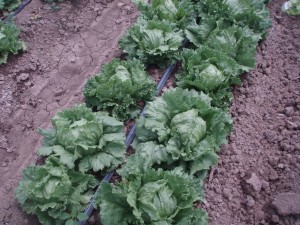Good Water Management: A Wise Business Decision
 Increasing water costs and water scarcity are becoming critical issues that are affecting the bottom lines for growers’ businesses. Whether these issues are the result of droughts, environmental concerns, or water regulations, the fact is that growers need to improve their water management techniques.
Increasing water costs and water scarcity are becoming critical issues that are affecting the bottom lines for growers’ businesses. Whether these issues are the result of droughts, environmental concerns, or water regulations, the fact is that growers need to improve their water management techniques.
In a recent online article in Growing Produce, Michael Cahn highlights how growers in California are utilizing drip irrigation to improve their water management and crop quality. In one paragraph, Cahn writes, “In the Central Valley where surface water allocations can be limited during drought years, drip has allowed growers to farm more acres with less water. Besides saving water, drip provides more management options for growers. Under drip, tractor operations are less likely to be hampered by saturated furrows and application uniformity under drip is not affected by wind, which is common in the afternoon along the coast. Additionally, drip can reduce foliar disease pressure in crops by keeping leaves dry.”
Continue reading